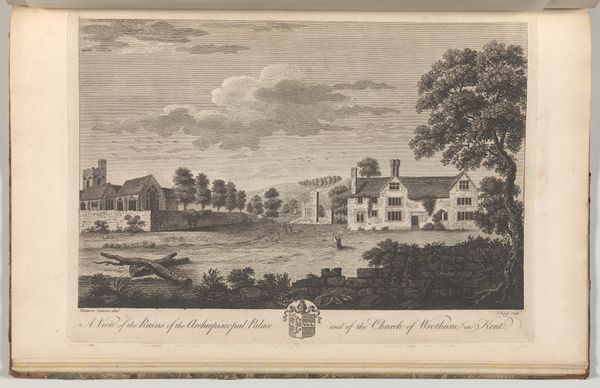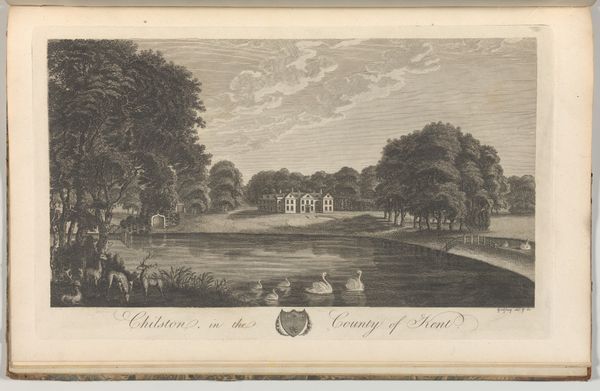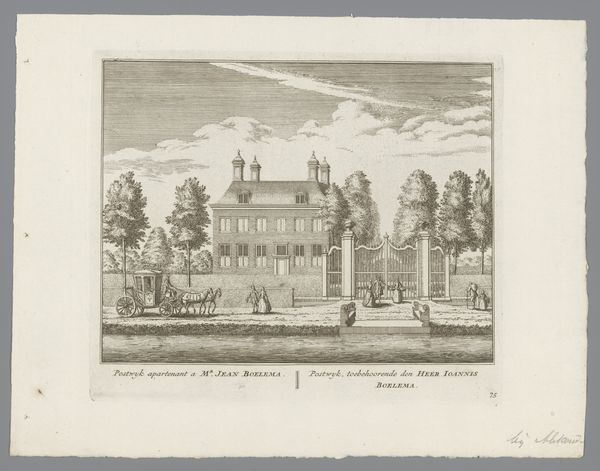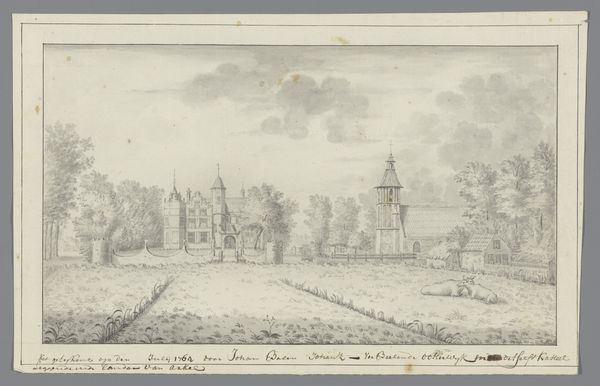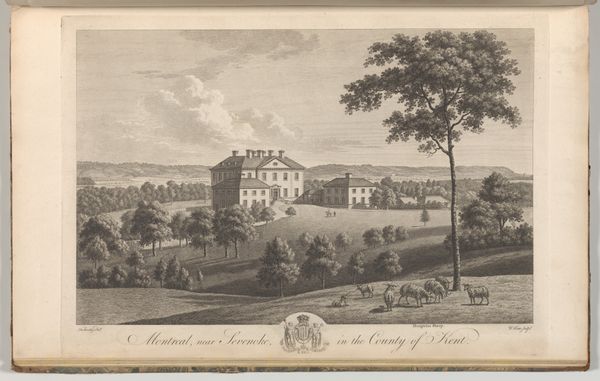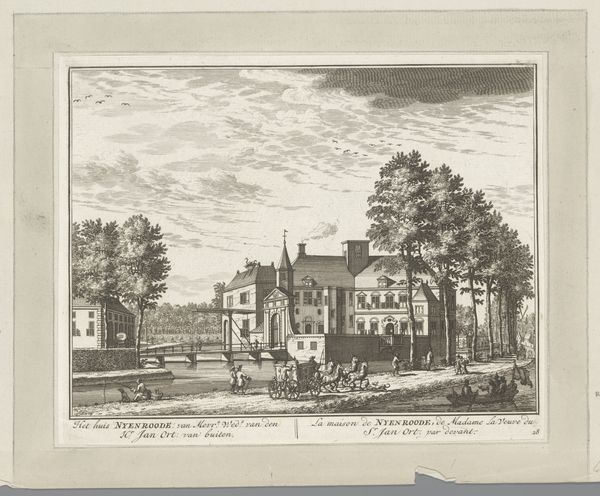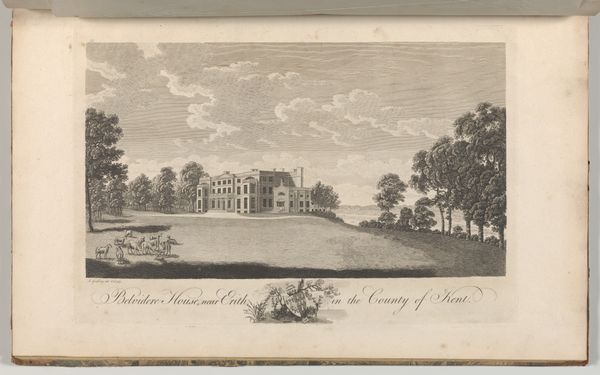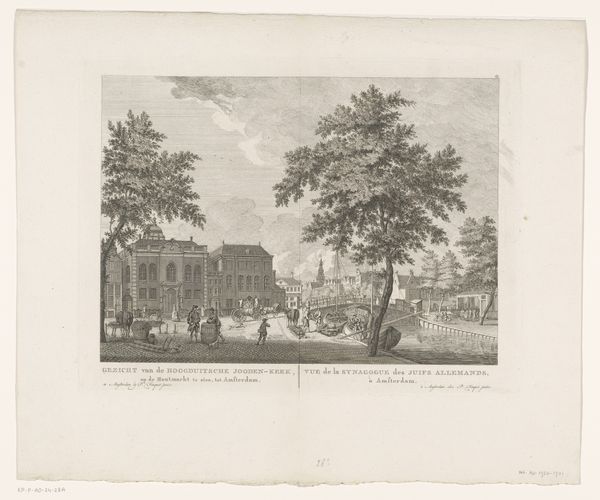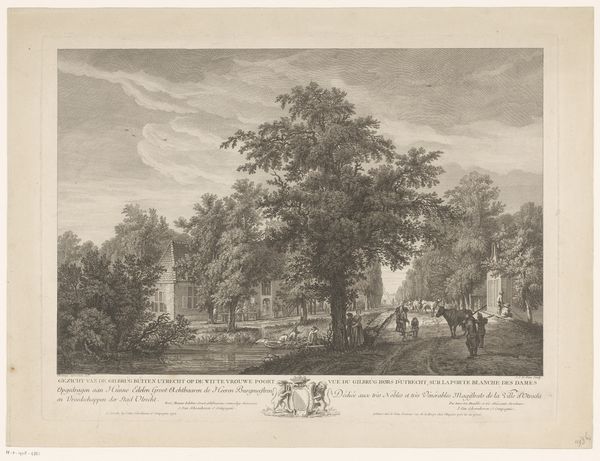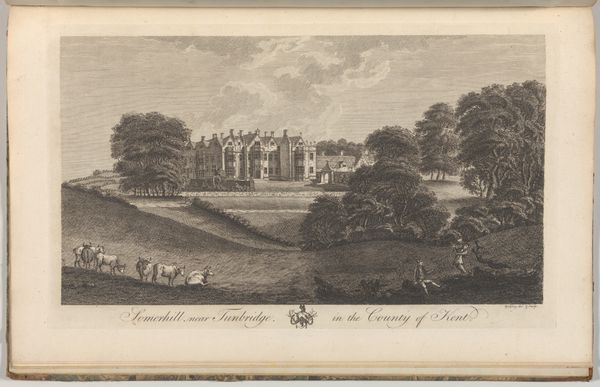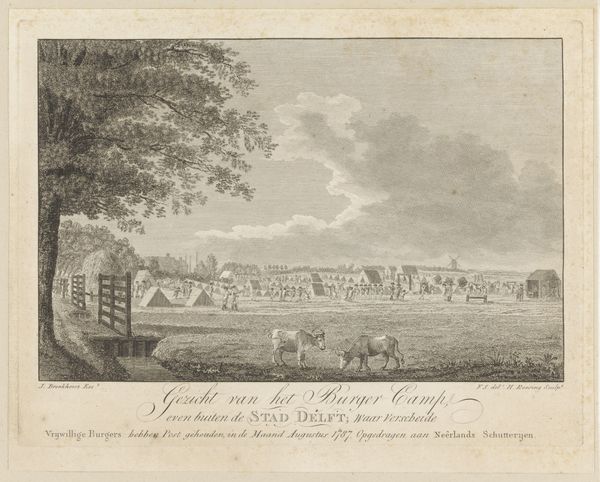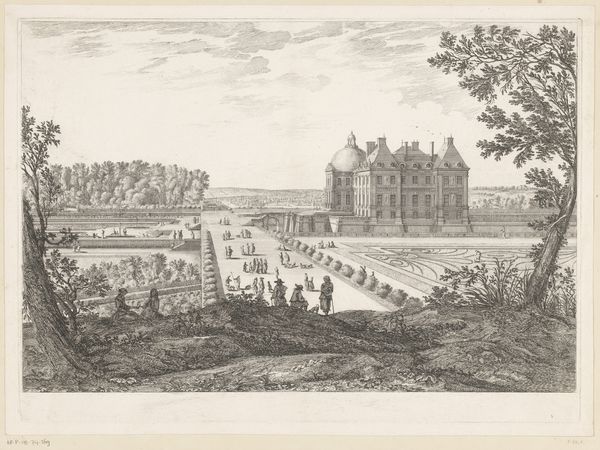
The Ancient Episcopal Palace of Bromley, belonging to the See of Rochester, taken before the year 1756, from Edward Hasted's, The History and Topographical Survey of the County of Kent, vols. 1-3 1777 - 1790
0:00
0:00
drawing, print, engraving
#
drawing
#
neoclacissism
# print
#
landscape
#
cityscape
#
history-painting
#
academic-art
#
engraving
Dimensions: Book: 17 5/16 × 11 × 13/16 in. (44 × 28 × 2 cm) Sheet: 16 15/16 × 10 5/8 in. (43 × 27 cm) Plate: 10 1/16 × 14 in. (25.5 × 35.5 cm)
Copyright: Public Domain
Editor: This is an engraving from around 1777 to 1790 titled "The Ancient Episcopal Palace of Bromley," and it depicts a landscape scene with some figures in the foreground. I’m struck by the overall sense of order and balance in the composition. It's quite calming, but I wonder how to fully grasp what I’m seeing here? Art Historian: Indeed. Let's look closely at the structure of this work. Observe how the artist employs line. Notice the contrast between the density of the tree on the left and the carefully articulated architecture. How does that opposition structure your experience? Editor: Well, the sharp lines of the palace feel very controlled and precise, while the tree seems more wild, almost organic. The figures create an intersection with the architecture through color and size and create an entry point. Art Historian: Precisely. And what do you observe about the placement of the horizon and the use of perspective? Note how your eye is led toward a vanishing point beyond the structure. The sky contributes significantly to the affect; what feelings are generated within you due to the density of lines and light? Editor: I see that. The way the clouds are drawn, with such detail, makes the sky feel weighty, like it's pressing down. The contrast with the bright clearing is subtle, but it emphasizes the depth and makes it very engaging! The Palace becomes secondary through the heavy nature bearing down from above, pushing it downward with all of its precision and calculated form. It makes me feel a certain, pleasant melancholy. Art Historian: An astute observation! The balance of light and shadow, line and form, meticulously structures our reading of the scene, but what happens when you turn to your emotional reading of these artistic elements? And remember this piece, while functioning as a visual record, engages classical modes through an idealized landscape. What then, should we make of this image? Editor: I think it reminds us that art isn't just about what is depicted, but how. The technique here creates such an intricate mood! Art Historian: Exactly. Understanding form, construction, materiality can unlock such pieces, guiding your own engagement with aesthetics.
Comments
No comments
Be the first to comment and join the conversation on the ultimate creative platform.

